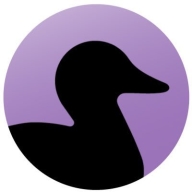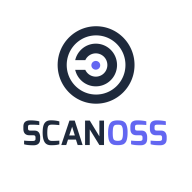

Black Duck SCA and SCANOSS compete in software composition analysis. Black Duck SCA appears to have the upper hand in comprehensive open-source management and security, while SCANOSS offers advantages in cost-effectiveness and code scanning capabilities.
Features: Black Duck SCA offers robust open-source management, vulnerability detection, and policy enforcement for comprehensive risk management. SCANOSS features technology focused on detecting a wide range of open-source components quickly, making it ideal for environments where speed and cost efficiency are priorities.
Ease of Deployment and Customer Service: Black Duck SCA deployment is geared towards larger enterprises with extensive support integration and scalable architecture, preferring environments needing significant customization. SCANOSS provides straightforward deployment suitable for organizations with limited resources, recognized for simplicity and quick setup.
Pricing and ROI: Black Duck SCA involves higher setup costs but is considered valuable for long-term ROI through its comprehensive features, especially for high-compliance and high-security environments. SCANOSS is more affordable upfront, offering quicker returns through its streamlined functionality, appealing to organizations with tighter budgets.
| Product | Market Share (%) |
|---|---|
| Black Duck | 16.7% |
| SCANOSS | 0.4% |
| Other | 82.9% |

| Company Size | Count |
|---|---|
| Small Business | 6 |
| Large Enterprise | 16 |
Black Duck is an essential tool for software composition analysis and license compliance. It identifies vulnerabilities effectively and supports security management in DevOps environments, offering integration, performance stability, and community support.
Organizations rely on Black Duck for seamless integration in CI/CD pipelines, thorough scanning of source and binary codes, and management of operational risks associated with open-source and commercial licenses. It plays a crucial role in security risk management and delivers a robust policy management framework. Users value its ease of use and reliable community support while benefiting from its comprehensive dependency visualization capabilities. Despite its strengths, there is room for enhancement in integration with other tools, UI friendliness, and reporting features.
What are Black Duck's key features?
What should users look for in ROI?
Enterprise environments use Black Duck extensively for security, compliance, and risk management, ensuring software meets regulatory standards and mitigates vulnerabilities. Its implementation in specific industries aids in controlled and secure software development processes, underlining its role in maintaining rigorous security standards while delivering dependable performance.
SCANOSS is a comprehensive open source management tool, essential for businesses navigating software compliance, security, and code quality, effectively addressing software development complexities.
SCANOSS offers sophisticated capabilities in identifying, managing, and securing open-source components. It provides developers with real-time insights into code dependencies, licensing, and vulnerabilities, enabling efficient maintenance and security compliance. With its robust scanning mechanism, SCANOSS supports seamless integration into existing development workflows, ensuring minimal disruption while optimizing code quality and compliance. Notably, the platform excels in delivering actionable data that aids developers in making informed decisions throughout the software development lifecycle.
What are the essential features of SCANOSS?In sectors like finance and healthcare, where compliance and security are paramount, SCANOSS is instrumental in ensuring software integrity and adherence to regulatory requirements. By integrating SCANOSS, these industries can significantly reduce the risk of software vulnerabilities and compliance violations, ultimately safeguarding their operational and reputational integrity.
We monitor all Software Composition Analysis (SCA) reviews to prevent fraudulent reviews and keep review quality high. We do not post reviews by company employees or direct competitors. We validate each review for authenticity via cross-reference with LinkedIn, and personal follow-up with the reviewer when necessary.